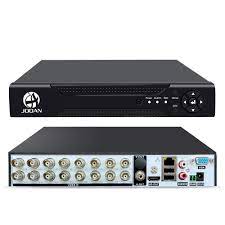Network Monitoring: Enhancing Efficiency and Security in the Digital Age
In today’s interconnected world, where businesses rely heavily on technology and networks to carry out their operations, network monitoring has become a crucial aspect of maintaining efficiency and security. Network monitoring refers to the practice of constantly observing and analyzing network activity to ensure its smooth functioning, detect issues, and prevent potential threats. Let’s delve deeper into the importance of network monitoring and its benefits.
- Identifying Performance Bottlenecks: Network monitoring allows organizations to identify performance bottlenecks by tracking bandwidth utilization, latency, packet loss, and other key metrics. By pinpointing areas of congestion or inefficiency, network administrators can take proactive measures to optimize performance and ensure uninterrupted connectivity for users.
- Troubleshooting Network Issues: When network issues arise, time is of the essence in resolving them promptly. Network monitoring tools provide real-time alerts and notifications about anomalies such as sudden drops in connectivity or unusual traffic patterns. This enables IT teams to quickly identify the root cause of the problem and take appropriate actions to minimize downtime.
- Enhancing Security: Cybersecurity threats are a constant concern in today’s digital landscape. Network monitoring plays a vital role in detecting suspicious activities that may indicate unauthorized access attempts or malware infections. By closely monitoring network traffic, administrators can identify potential security breaches early on, enabling them to respond swiftly and mitigate any risks.
- Capacity Planning: As businesses grow and evolve, their network infrastructure needs to scale accordingly. Network monitoring tools provide valuable insights into resource utilization trends over time, helping organizations plan for future capacity requirements accurately. This proactive approach ensures that networks can handle increasing demands without compromising performance or security.
- Compliance Requirements: Many industries have strict regulatory compliance standards that govern data privacy and security practices. Network monitoring assists organizations in meeting these requirements by providing visibility into network activity logs and aiding in incident response efforts when necessary.
- Optimizing Resource Allocation: Network monitoring helps organizations optimize resource allocation by identifying underutilized or overburdened network segments. By redistributing resources effectively, businesses can reduce unnecessary costs and improve overall network performance.
- Proactive Maintenance: Rather than waiting for issues to occur, network monitoring allows organizations to adopt a proactive maintenance approach. By continuously monitoring network components such as routers, switches, and servers, administrators can identify signs of potential failures or degradation and take preventive measures before they impact critical operations.
In conclusion, network monitoring is an indispensable practice in today’s digital landscape. It not only ensures the smooth functioning of networks but also enhances efficiency and security. By leveraging advanced monitoring tools and techniques, organizations can proactively address issues, optimize resource allocation, and safeguard their networks against potential threats. Investing in robust network monitoring solutions is essential for businesses aiming to stay competitive and resilient in the ever-evolving digital age.
Frequently Asked Questions about Network Monitoring: Key Features, Types, Meaning, and Importance
- What are the key features in network monitoring?
- What are the two types of network monitoring?
- What is meant by network monitoring?
- Why do you need network monitoring?
What are the key features in network monitoring?
Network monitoring tools come with a range of features designed to provide comprehensive visibility into network performance and security. Some key features to look for in network monitoring solutions include:
- Real-time Monitoring: The ability to monitor network activity in real-time is crucial for promptly identifying and addressing issues. Real-time monitoring provides instant alerts and notifications about anomalies, allowing administrators to take immediate action.
- Performance Metrics: Network monitoring tools should offer a wide array of performance metrics such as bandwidth utilization, latency, packet loss, and throughput. These metrics help administrators identify bottlenecks, analyze trends, and optimize network performance.
- Traffic Analysis: Detailed traffic analysis capabilities allow administrators to gain insights into the types of traffic traversing the network. This helps in understanding usage patterns, detecting anomalies, and identifying potential security threats.
- Alerting and Notifications: Network monitoring tools should have customizable alerting mechanisms that can notify administrators when predefined thresholds or abnormal events are detected. This ensures that IT teams can respond quickly to any issues that may arise.
- Historical Data Analysis: The ability to store and analyze historical data is valuable for trend analysis, capacity planning, and troubleshooting purposes. Historical data allows administrators to identify recurring patterns or issues that may require attention.
- Network Mapping: Network mapping features provide visual representations of the network infrastructure, including devices, connections, and dependencies between components. This helps in understanding the overall network topology and simplifies troubleshooting efforts.
- Security Monitoring: Network monitoring solutions should include security-focused features such as intrusion detection systems (IDS), intrusion prevention systems (IPS), firewall log analysis, and threat intelligence integration. These features help identify potential security breaches or malicious activities within the network.
- Reporting and Analytics: Robust reporting capabilities enable administrators to generate customized reports on various aspects of network performance, security incidents, compliance adherence, and more. Analytics features provide deeper insights into trends and patterns within the network data.
- Scalability and Flexibility: Network monitoring tools should be able to scale with the organization’s network infrastructure. They should support monitoring of a wide range of devices, protocols, and network types, including wired and wireless networks.
- Integration with Other Tools: Integration capabilities with other IT management tools like ticketing systems, configuration management databases (CMDB), or service desk platforms streamline workflows and enable seamless collaboration between teams.
When evaluating network monitoring solutions, considering these key features will help organizations choose a tool that aligns with their specific requirements and ensures comprehensive monitoring of their network infrastructure.
What are the two types of network monitoring?
The two types of network monitoring are:
1. Passive Network Monitoring: Passive network monitoring involves the collection and analysis of network traffic without actively interfering or modifying it. This type of monitoring is typically done by deploying network monitoring tools or software that capture and analyze packets flowing through the network. Passive monitoring allows administrators to gain insights into network performance, identify anomalies, and detect potential security threats without disrupting the normal flow of traffic.
2. Active Network Monitoring: Active network monitoring involves actively sending test packets or performing specific actions to assess the performance and availability of network devices and services. This type of monitoring often includes techniques such as ping tests, traceroutes, and synthetic transactions to simulate real user interactions. Active monitoring helps administrators proactively identify issues such as latency, packet loss, or service disruptions, allowing them to take corrective measures before users are affected.
Both passive and active network monitoring play complementary roles in ensuring efficient and secure network operations. While passive monitoring provides a comprehensive view of overall network performance and security, active monitoring allows administrators to actively measure specific aspects of the network’s functionality in real-time. By combining both approaches, organizations can gain a holistic understanding of their networks’ health and take proactive steps towards optimization and security enhancement.
What is meant by network monitoring?
Network monitoring refers to the process of continuously observing and analyzing network activity to ensure its smooth operation, detect any issues or anomalies, and maintain optimal performance and security. It involves the use of specialized tools and software that monitor various aspects of a network, such as bandwidth utilization, latency, packet loss, device connectivity, and network traffic. By monitoring these parameters in real-time or through periodic checks, network administrators can proactively identify problems, troubleshoot issues, optimize resource allocation, and prevent potential security threats. Network monitoring plays a crucial role in maintaining the efficiency, reliability, and security of computer networks in organizations of all sizes.
Why do you need network monitoring?
Network monitoring is essential for several reasons:
- Identifying and Resolving Performance Issues: Network monitoring helps identify bottlenecks, bandwidth congestion, latency issues, and other performance-related problems. By monitoring network activity, administrators can proactively address these issues to ensure optimal network performance.
- Ensuring Network Security: Network monitoring plays a crucial role in detecting and preventing security threats. It allows administrators to monitor for suspicious activities, unauthorized access attempts, malware infections, and other potential security breaches. By promptly identifying these threats, organizations can take immediate action to mitigate risks and protect sensitive data.
- Minimizing Downtime: Network outages or disruptions can have severe consequences for businesses, resulting in lost productivity and revenue. Network monitoring provides real-time alerts and notifications about network issues, enabling IT teams to quickly identify the root cause of problems and take necessary measures to minimize downtime.
- Capacity Planning: As businesses grow and their network requirements evolve, capacity planning becomes crucial. Network monitoring helps organizations track resource utilization trends over time, allowing them to accurately plan for future capacity needs. This ensures that networks can handle increasing demands without compromising performance or causing disruptions.
- Compliance Requirements: Many industries have regulatory compliance standards that dictate data privacy and security practices. Network monitoring helps meet these requirements by providing visibility into network activity logs and aiding in incident response efforts when necessary.
- Optimizing Resource Allocation: Network monitoring enables organizations to optimize resource allocation by identifying underutilized or overburdened network segments. By redistributing resources effectively, businesses can reduce unnecessary costs and improve overall network performance.
- Proactive Maintenance: Instead of reacting to issues as they occur, network monitoring allows for proactive maintenance. By continuously monitoring network components such as routers, switches, and servers, administrators can identify signs of potential failures or degradation before they impact critical operations.
In summary, network monitoring is crucial for maintaining efficient operations, ensuring security, minimizing downtime, complying with regulations, optimizing resource allocation, and adopting a proactive approach to network maintenance. It is an essential practice for businesses of all sizes in today’s interconnected digital landscape.



